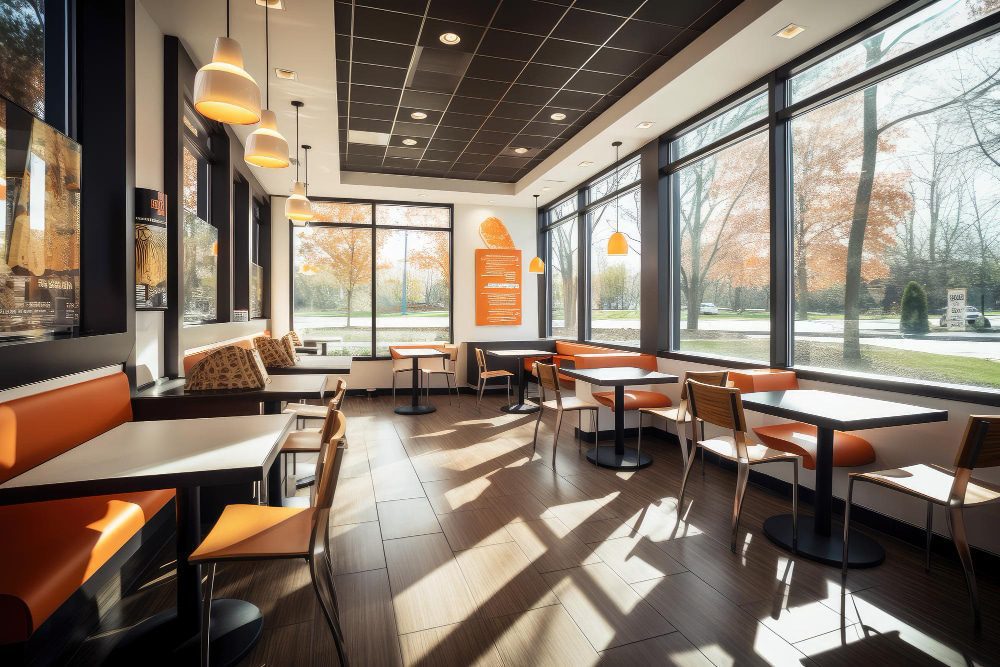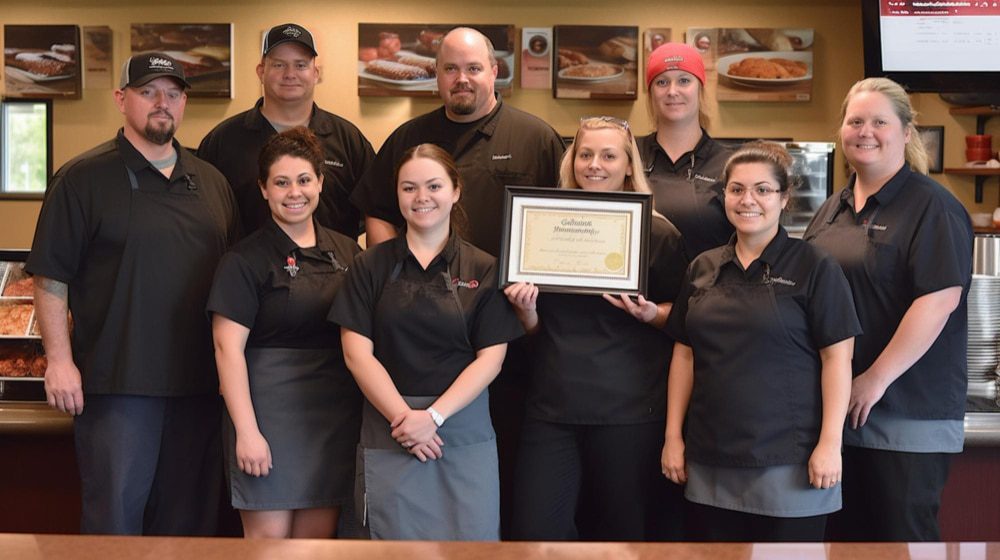Managing a multi-location restaurant will definitely challenge your management. Because managing multiple restaurants requires management with specific skills to maintain consistent quality and service while maximizing profits and efficiency. By implementing smart management techniques that prioritize standardization, communication, and data-driven decision making, you can unlock untapped potential for increased profits. This article will reveal the secret to boosting profits in multi-location restaurant operations.

Managing multi-location restaurant management requires considering factors such as customer preferences, local regulations, and competition. It is important for restaurant managers to have an efficient system in place for communication, processes, and resource allocation. One way to achieve this is by using technology solutions that centralize operations and provide real-time information on each restaurant’s performance. This includes using a point-of-sale system that integrates with inventory management software and reporting tools. By analyzing data, managers can identify trends, make informed decisions about menu items and promotions, optimize staffing levels, and increase profitability.
Challenges of managing multiple restaurant locations
Each restaurant has its own staff, atmosphere, and customers. It is important to maintain a consistent brand and quality. This requires good communication between management and staff, and training programs to keep everyone on the same page. Inventory management is also a challenge. With multiple locations, there are multiple orders, deliveries, and storage spaces. Coordinating these logistics can be difficult without proper systems. Managers should use inventory tracking software to monitor stock levels in real-time across all locations. This helps prevent waste, ensures popular items are always available, and prevents shortages.

Furthermore, managing multiple locations often means dealing with different local regulations and operational complexities. Each location may have different labor laws, health regulations, opening hours restrictions or even cultural nuances that need to be considered for successful operations. Navigating this web of legalities requires meticulous attention to detail and diligent research.
Streamlining operations: the key to success
One of the main challenges faced by multi-location restaurants is maintaining consistency across all branches. Streamlining operations plays a crucial role in achieving this goal. By implementing standardized processes and systems, restaurants can ensure that every location follows the same procedures, resulting in consistent quality for all customers.
Moreover, streamlining operations not only improves consistency but also enhances efficiency. By identifying and eliminating unnecessary steps or bottlenecks in the workflow, restaurants can save time and reduce operational costs. For example, centralizing procurement and inventory management allows for bulk purchasing and prevents overstocking at individual locations.
Integrated technology systems provide real-time data on sales, customer preferences, and employee productivity. This helps owners make informed decisions to optimize their business strategy. Streamlining operations and connecting locations can unlock the full potential of multi-location restaurants. This approach improves consistency, efficiency, and provides valuable data insights for increased profits and sustained growth.
Implementing technology for improved efficiency
Using technology to improve efficiency is no longer just a trend – it is now crucial for the success of multi-location restaurants. With growing competition and changing customer demands, restaurants need to find new ways to simplify their multi-location restaurant management and increase profits. Technology can help with this by automating tasks, enhancing communication, and giving valuable information about customer preferences.
One way technology can enhance efficiency is through the implementation of robust restaurant management systems. These systems integrate various aspects of restaurant operations, such as inventory management, ordering, table reservations, and staff scheduling. By centralizing these functions into one platform, restaurants can reduce errors caused by manual data entry, streamline workflows, and eliminate time-consuming administrative tasks.
In addition to management systems, advanced POS (point-of-sale) software can also prove invaluable in improving efficiency. With features like contactless payments, online ordering integration, and real-time analytics on sales performance; restaurants can not only speed up transactions but also gain valuable insights into customer behavior. This information enables them to make informed decisions regarding menu planning and marketing strategies that will ultimately drive more revenue.
Multi-location restaurants can use technology to improve efficiency and make customers happier. It’s important for restaurants to keep up with technology to stay successful and make more money.
Standardizing processes and procedures across all locations
Standardizing processes and procedures across all locations is a crucial aspect of streamlining multi-location restaurant management. It ensures consistent quality, efficiency, and customer experience, no matter which branch a customer visits. By creating standardized protocols for everything from food preparation to service delivery, restaurants can minimize errors and maximize productivity across the board.

Standardization improves operational efficiency. When all locations use the same processes and procedures, employees become familiar with them and can work more efficiently. This saves time and reduces errors, leading to faster service and a consistent dining experience for customers at any location.
Furthermore, standardizing processes also allows for better control over quality management. With clear protocols in place, it becomes easier to monitor performance and identify areas that need improvement. By regularly reviewing these standards, restaurants can ensure that their operations align with industry best practices while maintaining consistency across all locations. This not only boosts overall customer satisfaction but also instills confidence in the brand’s ability to deliver top-notch experiences every time.
In conclusion, standardizing processes and procedures across all locations is vital for streamlining multi-location restaurant operations. It enhances efficiency by reducing confusion among employees while ensuring consistency in quality management throughout the entire chain of restaurants.
Training staff for consistency and quality
One of the key challenges for multi-location restaurant management operations is maintaining consistency and quality across all locations. This can be achieved by investing in comprehensive training programs that empower staff to consistently deliver exceptional service and products. By ensuring that every employee is equipped with the necessary skills, knowledge, and tools, restaurants can create a culture of excellence that sets them apart from their competitors.
Training should encompass both technical skills, such as food preparation techniques and operating machinery, as well as soft skills like customer service and team communication. It’s important to provide ongoing training opportunities to keep staff updated on industry trends and best practices. Additionally, empowering employees involves giving them the autonomy to make decisions within set guidelines, fostering a sense of ownership for their work.
Staff Empowerment and Engagement
Consistent training programs help employees gain skills and create camaraderie. Open communication between staff and management allows for feedback on efficiency and customer expectations. Managing multiple restaurant locations requires planning, technology solutions, and engaged employees.

By properly training and empowering staff for consistency and quality, restaurants can not only enhance customer satisfaction but also boost their bottom line. When customers have a positive experience at one location, they are more likely to visit another branch or recommend it to others – leading to increased footfall and revenue generation across all locations. Ultimately, investing in staff training pays off in terms of higher profits and a reputation for excellence in the highly competitive restaurant industry.
Utilizing data analytics for better decision-making
Data analytics has changed how businesses work, including restaurants. By using data, restaurant chains with multiple locations can make better decisions that increase profits and make their operations more efficient. Decision-makers can analyze what customers like, track sales trends, and find areas to improve.
One significant area where data analytics can make a difference is in menu optimization. By analyzing data on item popularity, profitability, and customer feedback across locations, restaurants can fine-tune their menus to offer the most appealing and profitable dishes. This not only enhances customer satisfaction but also maximizes revenue by ensuring that high-margin items are emphasized.
Data analytics can also aid in demand forecasting and inventory management. By examining historical sales data along with external factors like weather patterns or local events, restaurants can accurately predict future demand for specific menu items at each location. This allows them to optimize inventory levels accordingly to avoid wastage while meeting customer needs efficiently.
Overall, utilizing data analytics for decision-making provides multi-location restaurant operators with valuable insights into consumer behavior and operational efficiency. By leveraging this wealth of information effectively, restaurateurs can drive profits by making smarter decisions based on concrete evidence rather than relying solely on intuition or past experiences.
Conclusion: Increasing profits through streamlined multi-location operations
In conclusion, streamlining multi-location restaurant management operations is a powerful strategy to increase profits. By centralizing processes such as purchasing, inventory management, and menu pricing, restaurants can achieve greater efficiency across all locations. This not only saves time and reduces costs but also allows for better consistency in food quality and customer experience.
Moreover, with streamlined operations comes the ability to identify strengths and weaknesses within each location. Managers can analyze sales data and trends to determine which dishes or promotions are most successful at each site. Armed with this knowledge, they can make informed decisions on menu changes or marketing strategies to optimize profitability.
By implementing technology solutions like cloud-based POS systems and online ordering platforms, restaurants can further streamline operations. These tools enable real-time communication between locations, automate inventory replenishment, and provide valuable insights into consumer behavior.
Investing in streamlined multi-location restaurant operations boosts profits by reducing waste and increasing revenue. It improves workflows, enhances customer experiences, and delivers consistent results across all locations, which are essential for success in the competitive food industry.
Working with United Banc Card of TN
If you find yourself wanting to conquer your restaurant, retail shop, look no further than United Banc Card of TN. With their innovative solutions and trusted POS System services, they will guide you towards financial success. Whether you are a small business owner or an individual looking to manage your finances better, United Banc Card of TN has the tools and expertise to help. Call us today @ 615-476-0255


